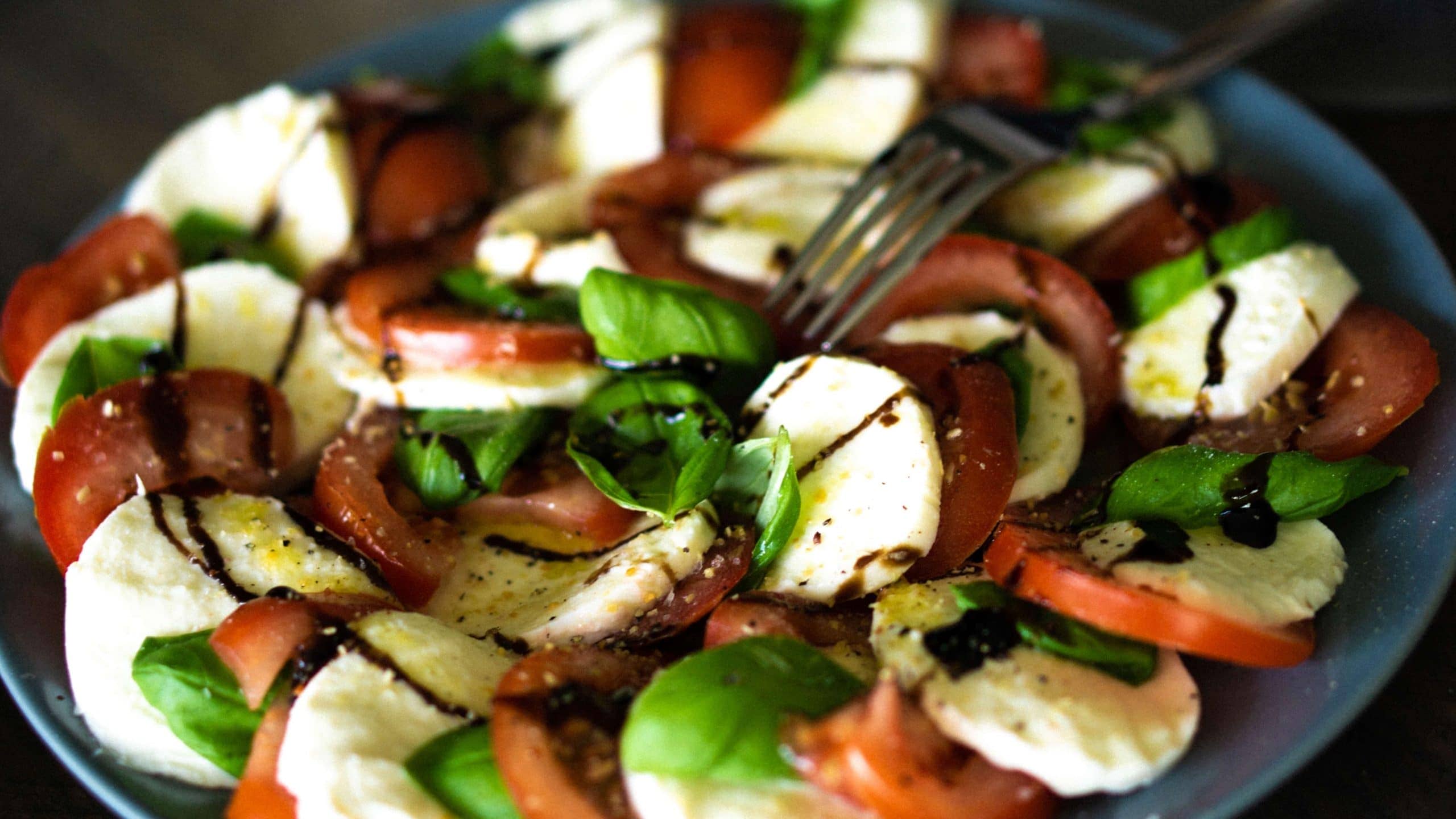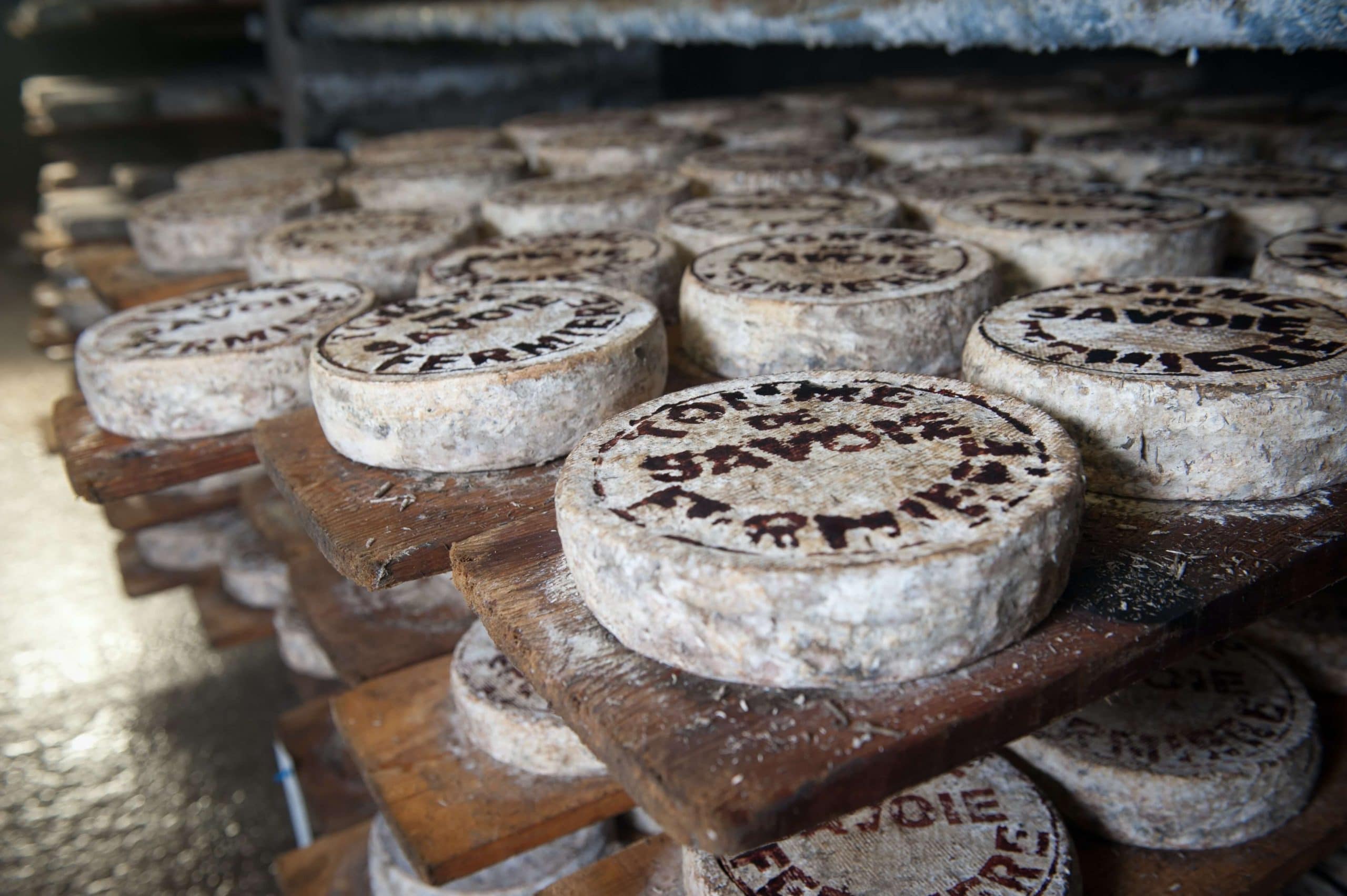Cheese is a frequent guest on our table. We eat it as it is, with sandwiches, added to omelets, or sprinkled over the salad.
Since cheese varieties are numerous, we often don’t know exactly the difference between certain sorts of this widely used product.
If you ever wondered how to tell the difference between the fresh and aged cheese, this article will be right for you!
Related: Can You Freeze Cheese?
What Is Fresh Cheese?
First of all, let’s clarify the fresh cheese definition. Fresh (also called infant) cheese is a product in its youngest and purest form as it comes from the name.
It is produced by curdling and draining the milk adding just a little bit of other processing.
This sort of cheese usually has no additional preservatives and it makes this foodstuff not so long-lasting as other sorts of this product.
It is often defined by the simple flavor and soft, sometimes a bit creamy or pliable texture. You won’t find a rind which is another significant feature of it. Its taste is also recognizable as being mild with slightly salty or tangy notes.
What Foods Belong To Fresh Cheeses
Since it may be somewhat difficult to define fresh cheese in a store as long as they are all packed and covered so you won’t be able to examine them from all sides, remember the most popular types of fresh cheese that can be found when we go shopping.
Cream cheese
Soft, creamy, and spreadable with a mild taste and creamy aroma.
Goat cheese
Often sold in logs, with a significant milky taste
Ricotta cheese
Spreadable and cream-like product with a very mild and simple taste
Mozzarella cheese
Made from buffalo milk, it has an elastic texture and a mild taste
Feta cheese
The Greek cheese made of goat and sheep milk

Halloumi cheese
One of the thickest fresh cheeses that can be easily fried or grilled
Paneer
This cheese can’t be melted and it’s produced of heated milk with the addition of vinegar or other natural acids.
Keep this fresh cheese list in mind any time you go shopping to make it easier to figure out what exactly you see on the shelf in front of yourself.
Soft Cheese Definition
Naturally, a question may occur whether any soft cheese belongs to fresh cheeses. In fact, that’s a wrong belief since soft cheeses are not always unaged.
Even though soft cheeses are not matured, their texture is thicker compared to the fresh counterpart. They have a soft, creamy, and smooth texture, and they are not cooked or pressed during the manufacturing process.

The most widely known soft cheese examples can be feta, Saint-Damase, Brie, and Camembert.
What Is the Difference Between Fresh Cheese And Aged Cheese?
Of course, cheese lovers eager to know how they can tell the difference between fresh and aged products.
In fact, this is very easy to do since aged cheeses are all hard and solid and they can’t be spread like their fresh counterparts.
To be more precise, aged cheese goes through the ripening process that can last for six months and more whereas fresh cheese doesn’t.
Aged Cheese List

In order not to get lost among the variety of cheeses in a shop, we recommend you to memorize the most popular and usable sorts of aged cheese.
- Camembert is famous for its pungent and mild taste, as well as the rich texture and aroma
- Gorgonzola which is a blue cheese whose rind is edible
- Cheddar with a sharp nutty flavor and a crumbly texture
- Emmentaler, hard enough but with the sweet nutty flavor
- Gouda
- Parmigiano that is known for its piquant and sharp taste, and grainy texture
Some people don’t like this sort of cheese because of the specific taste of odor of some of its kinds (like blue cheese, for instance) but it’s worth trying!
Unaged Cheese. What Is This?
On the other hand, you could probably notice the packages saying “non-aged cheese” in a store. This young or unaged cheese is another variant of the famous dairy product.
It is called young because the ripening time is shorter than for the other sorts of the product and it usually lasts for several months whereas some sorts of cheese can get ready for years!
Among the most eatable on the young cheese list is Burrata, Provolone, Chevre, and Mascarpone.
One can never know everything about cheese since this product has a long history. To be better informed, check our frequent questions to get more useful info about this delicious foodstuff!
[wp-faq-schema title=”Frequently Asked Questions”]
Cheese is a great food to have in a kitchen! It fits almost any dish both cold and hot, it accompanies our toasts and sandwiches perfectly, and putting a slice or two over the piece of homemade pizza will make it heavenly delicious!
Most hard cheeses are easily melted whereas softer counterparts can be smeared over a slice of bread or a cracker.
Feel free to experiment and try to mix different sorts of cheese to find your very own and special combination since the variety of this product’s kinds is so wide!
Add cheese to pasta and ravioli, salads, hot savory dishes, and casseroles. Eat it as it is or create your own recipe – this foodstuff does indeed allows us to experiment to the most!
Read next: How Long Does Tofu Last?

Hi! I’ve recently bought a piece of goat cheese log. It’s said on the packet it’s fresh… What is considered a fresh cheese? Is it connected to the expiry date somehow?
Hi there! No, it’s not about the expiry. Fresh means that this cheese is not ripened and it is not processed, and that’s all.
Not so long ago I heard about the seven kinds of cheese. Does anyone know what are the 7 types of cheese? Would be grateful for any response.
Hello! Basically, it means the major types of cheese: fresh, aged, soft, semi-soft, hard, blue, and flavored.
Is Cheddar a fresh cheese? My recipe calls for a fresh one but I only have this piece. Does anybody know?
Hey there. You’ll have to go shopping since cheddar belongs to aged cheese. Sorry!
Is cottage cheese a fresh cheese? Can I use it for the recipes that require fresh cheese? Thank!
Hello! Yes, cottage cheese is fresh since it’s not ripened or aged so feel free to cook with it!
Maybe someone knows: Is cream cheese a fresh cheese? Thanks a lot!
Hey, cheese fan! Yeah, cream cheese is one of the fresh cheeses.